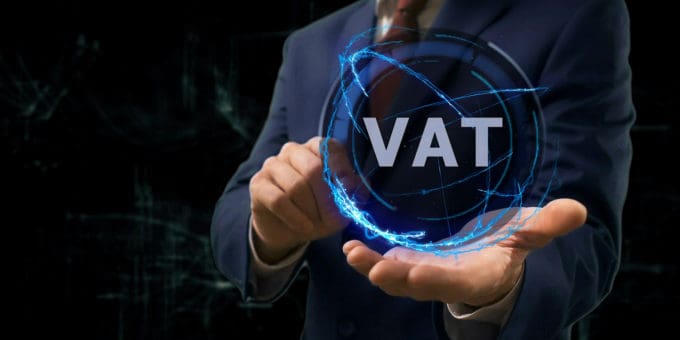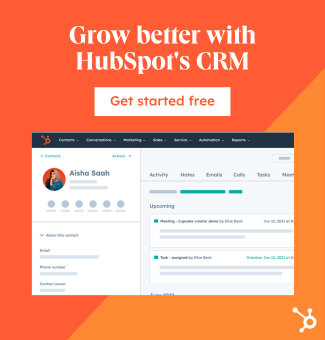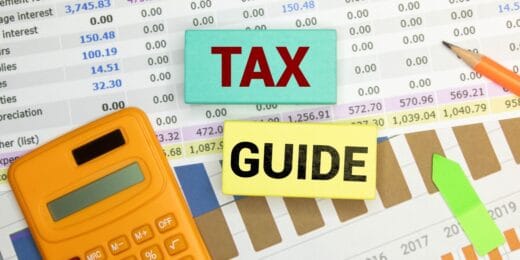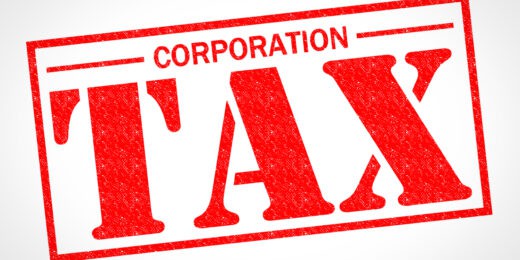All VAT-registered businesses must use Making Tax Digital for VAT unless they are exempt. Introduced in April 2019, this government system requires VAT-registered businesses to keep their records digitally and send VAT Returns to HMRC using compatible software.
There’s no need to sign up yourself. HMRC will automatically sign up your limited company or other business structure when registering for VAT. The only exceptions are businesses that are already exempt or have applied for exemption from Making Tax Digital (MTD) for VAT.
Below is a comprehensive guide to the rules and what your business must do to meet its legal obligations for MTD for VAT.
Key Takeaways
- Making Tax Digital for VAT is an HMRC system that requires VAT-registered businesses to maintain digital records and submit VAT Returns electronically using software.
- All VAT-registered businesses, including limited companies and sole traders, are automatically signed up for Making Tax Digital (MTD) when they register for VAT.
- Some businesses are exempt from HMRC’s MTD for VAT rules. For example, you may be exempt if it’s not practical to keep digital records due to age, location, or disability.
What is VAT, and should my business be paying it?
VAT stands for Value-Added Tax. It is a general consumption tax added to the price of most goods or services sold by VAT-registered businesses. This tax is levied at each stage of a product’s supply chain – from its production to the final sale to the end consumer.
Generally, your business is legally required to register for VAT with HMRC if its VAT-taxable turnover is:
- More than £90,000 (the VAT registration threshold) in any 12-month period, or
- You expect it to exceed the threshold in the next 30 days
You don’t need to register for VAT if your taxable turnover is below £90,000. However, your business may benefit from voluntary VAT registration, particularly if you pay VAT on supplies from other businesses or want to improve your professional image or competitive advantage.
What is Making Tax Digital for VAT?
Making Tax Digital (MTD) for VAT is a UK government initiative designed to streamline HMRC processes by helping businesses maintain accurate records, avoid common errors, and save time managing their VAT affairs.
Since April 2022, all VAT-registered businesses, including those who register voluntarily, have been legally required to use Making Tax Digital. The rules require those businesses to keep VAT records digitally and use compatible commercial software to file their VAT Returns.
Before the introduction of MTD, it was common for businesses to keep records and accounts using software on a computer, tablet, or smartphone. They’re often stored on a hard drive or via a cloud-based service, which is a safe way to ensure your company records are backed up and secure.
Under Making Tax Digital, the government requires that the software or services used by businesses to record and store their tax records (and then submit those records to HMRC) can communicate with HMRC’s Application Programming Interface (API) platform whilst upholding enhanced security standards.
These standards came into force for VAT Return periods beginning on 1 April 2019. Therefore, if your business is liable to pay VAT, your software or web-based services must comply with the MTD rules.
Exemption from Making Tax Digital for VAT
HMRC allows for several exemptions where compliance with Making Tax Digital is concerned. Your business doesn’t need to comply with these VAT rules if you can satisfy HMRC that:
- It is run entirely by practising members of a religious society whose beliefs aren’t compatible with the regulations. An example of those beliefs could be if your religion prevents you from using a computer.
- It is unreasonable or impractical for you to use digital tools due to your age, a disability, or the remoteness of your location.
- Your business is subject to an insolvency procedure.
Apart from those exemptions, you must comply with the Making Tax Digital rules after registering your business for VAT.
Digital record-keeping requirements for VAT
As a VAT-registered business, you must keep certain records and accounts. Under Making Tax Digital, many of those records and accounts need to be digital, and you must use ‘functional compatible software’.
Functional compatible software is a system, software product, or application that can:
- Record and preserve digital records
- Provide HMRC with information and returns from the data held in those records using the API platform
- Receive information from HMRC using that same API platform
Your business must perform these functions using the same software. For example, you might keep records using Microsoft Excel, then save those records on an encrypted cloud service and submit them to HMRC using a secure client portal or professional accounting software.
All that matters is that you are able to comply with each aspect of the functional compatible software requirement.
Another crucial point is that you do not need to store all of your digital records in one place or on just one programme. Digital tax records can be kept using a range of compatible digital formats, as long as they are accessible and meet HMRC’s requirements.
The requirement for Digital Links
Under MTD for VAT, data transfers or exchanges of information between software programmes, apps, or services must be digital if the information being transferred forms a part of your company’s digital records.
After data has been entered into software as part of your records, any new transfer or modification of data needs to be done digitally, and those changes must be linked to demonstrate that information’s digital journey.
Transferring data manually within or between different parts of a set of software programs or apps is not permissible.
An example of a violation of the new rules would be if you were to write down details from an invoice in one online ledger, then use the same handwritten notes to manually update another piece of software that forms part of your company’s functional compatible software system.
Once information has been made digital, it needs to stay digital.
That’s why ‘digital links’ are an essential record-keeping tool for your business under the Making Tax Digital rules. HMRC defines a digital link as the electronic transfer or exchange of data between programmes without the need for manual intervention.
Examples of digital links include:
- Emailing a spreadsheet with digital records to a tax agent so they can import the data into their own software
- Transferring a data set onto a portable device and physically giving that device to a tax agent
- An XML or CSV import
- An automated data transfer
- An API transfer
Simply cutting and pasting data does not count as a digital link.
Rules on submitting VAT information to HMRC
As previously mentioned, your VAT-registered business must always submit information to HMRC via an Application Programming Interface platform only.
But don’t worry, your commercial accounting or record-keeping software should already be VAT-enabled. If not, HMRC will accept a couple of alternatives for receiving submissions.
One acceptable alternative to API-enabled software is to use API-enabled spreadsheets, which can:
- Combine with accounting software to submit the necessary VAT information digitally to HMRC
- Be used to keep digital records and be submitted directly to HMRC
Another alternative is bridging software. This is a digital tool for connecting accounting software to HMRC systems. It allows the necessary VAT information to be sent to HMRC digitally.
What VAT records do I need to keep digitally?
There are several kinds of records and different data types that you must keep digitally under Making Tax Digital for VAT. The first type of information is called designatory data, which includes:
- Your business name and business address
- Your VAT registration number
- Any VAT accounting schemes your business uses
In addition to designatory data, you must digitally record the following information for every single supply you make:
- Time of supply
- Value of supply (which is the net value, not including VAT)
- The VAT rate you charge
These record-keeping requirements only apply to the goods or services you supply that are liable to VAT. If you carry out a supply that is exempt from VAT, you don’t need to record the above information digitally.
The same reporting requirements apply to supplies you receive. However, instead of recording the rate of VAT you charged as part of a supply, you must record the amount of input tax you plan to claim.
In cases where an invoice includes more than one supply, you can record the totals from the invoice. Likewise, if you don’t know the actual amount of input tax you will claim, you should just record the total amount of VAT adjusted for any irrecoverable VAT.
You must also record certain data about any third-party agent that arranges to supply goods to or on behalf of your business. HMRC includes a caveat in the regulations, pointing out that, in some cases, it may not be possible or practical to record digitally on a daily basis. So it’s okay to record third-party information as a single digital invoice.
Other rules that may affect your business
Making Tax Digital for VAT rules could also impact how your business records reverse-charge transactions. If your software records reverse-charge transactions, you don’t need separate entries for the self-supply and the purchase.
If your business software does not currently record reverse-charge transactions, you must record them twice – the first as a supply made and the second as supplies received.
You must also digitally record summary data as part of each VAT Return you submit to HMRC. This means that your functional compatible software will need to contain digital records of the total tax that your company:
- Owes on sales
- Owes on acquisitions from other EU countries
- Needs to pay on behalf of your suppliers under a reverse charge procedure
- Is entitled to claim on business purchases
- Needs to pay or can reclaim following a correction or error adjustment
You need to record any other adjustments allowed or required by VAT rules. The total of each adjustment must be recorded as a separate line in your software system.
How does Making Tax Digital affect accounting schemes?
The digital record-keeping and reporting requirements that Making Tax Digital imposes upon businesses affect several VAT accounting schemes.
First and foremost, if you join a VAT retail scheme, you must keep a digital record of your Daily Gross Takings (DGT). You don’t need to keep a separate record of the supplies that make up your DGT in your functional compatible software.
If you join the Flat Rate Scheme to account for VAT, you don’t need to keep a digital record of:
- Your business purchases, unless those purchases count as capital expenditure goods on which you can claim input tax
- The relevant goods used to determine whether your business must apply the limited-cost business rate
If your business uses software that doesn’t have a Flat Rate Scheme setting or enable you to include any rate of VAT other than the standard rate, reduced rate, or exemption rate, you’ll need to record each supply as either one standard-rated supply or one zero-rated supply.
The Gold Special Accounting Scheme
Does your company account for VAT using the Gold Special Accounting Scheme? If so, you need to keep a digital record of the following pieces of data for every sale you make as part of the scheme:
- Value of sales made
- Total output tax on purchases
If your company uses margin schemes, you are not required to keep additional records for those schemes in digital form. Moreover, you’re not expected to keep the calculation of the marginal VAT charged in digital form.
The bottom line
Making Tax Digital for VAT may seem daunting, but the rules and requirements are relatively straightforward once you understand them and become familiar with the processes.
Businesses have slowly been transitioning to a largely digital direction for decades, so MTD for VAT brings HMRC’s services in line with the convenience and efficiency UK businesses deserve.
You’ll need to consider how you create, share, and store digital records. You must also ensure all your accounting software and systems are compatible with HMRC’s MTD service.
If you have any questions, you should contact HMRC for support. You’ll also find more information in the official guidance on Making Tax Digital for VAT. When in doubt, it is always worth seeking the advice of a professional accountant to ensure your business complies with the rules.
Looking to form a limited company and register for VAT? Our All Inclusive Package includes VAT registration with HMRC, which is claimable at any time after company formation. We also offer a VAT Registration Service for existing companies for only £39.99.
Please note that the information provided in this article is for general informational purposes only and does not constitute legal, tax, or professional advice. While our aim is that the content is accurate and up to date, it should not be relied upon as a substitute for tailored advice from qualified professionals. We strongly recommend that you seek independent legal and tax advice specific to your circumstances before acting on any information contained in this article. We accept no responsibility or liability for any loss or damage that may result from your reliance on the information provided in this article. Use of the information contained in this article is entirely at your own risk.
















Join The Discussion